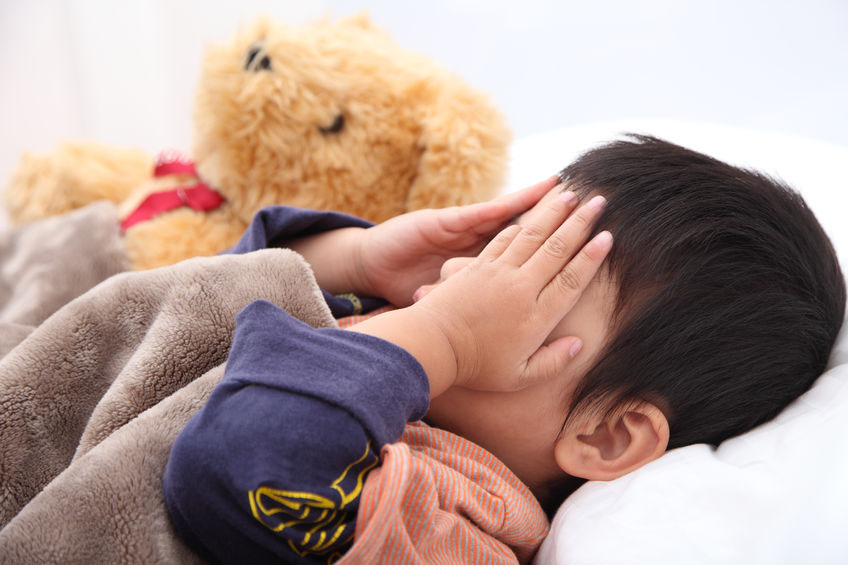Bedtime can be stress time for both the anxious child and their parents, but it doesn’t need to be a Herculean effort each night. There are a number of methods to help anxious kids drift off into slumber, resulting in a child that is better rested, and thus more prepared, for the next day.
Many children suffer from bedtime anxiety due to concerns like school, or just the fear that they will not be able to fall asleep. It is important to reassure them through those worries, as irrational as they may sometimes be. Other helpful sleep-time techniques include:
Use Creative Sleep Aids
There are many non-medicinal sleep aids you can try to help soothe your child at bedtime. Use a night light in the bedroom, and give your child a special blanket or stuffed animal to fall asleep with. Try playing guided meditation recordings and/or soft music. Essential oils can also help: get an essential oil diffuser for the room and a supply of soothing lavender oil.
Have A Nightly Routine
A pre-bed routine is essential for children of all ages, so devise one that works for your family. This helps kids transition from active time to bedtime. A warm, relaxing bath before bed can also go a long way toward easing your child into sleep. If you have purchased our Turnaround Program, you might decide to incorporate it into your nightly routine.
Skip The Screens
TV, movies and videogames can work kids into a frenzy that’s tough to wind down from if these activities are enjoyed too close to bed. But on an even more compelling, bio-chemical level, research indicates the light emitted from screens of all types and sizes actually blocks the production of melatonin, making it more difficult to fall asleep. Therefore, it’s best to cease all screen usage at least one hour before bedtime, if not two hours.
Practice Controlled Breathing
Controlled breathing is an essential part of yoga and its relaxation benefits, and you can utilize this aspect at bedtime. One method is to have your child imitate different animals while controlling their breath. It can greatly help an anxious child feel as if they’ve regained control.
Avoid ‘Pick-Me-Ups’
Stimulants like caffeine, energy drinks and chocolate (as well as secondhand smoke) can rev a child’s engine and prevent sleep if used too close to bedtime, so make a family effort to be mindful of these effects. You may also want to take a long look at your child’s medications (both over-the-counter and prescription), which may also cause sleeplessness. Consult with your physician regarding these concerns.
Offer Some Freedom
Allowing your child to self-regulate their sleep/wake-up times helps them develop valuable future skills for life. Let them read in bed for a bit if they can’t sleep. However, keep the lights dim or off, and give them an LED book light if necessary. In the mornings, wake-up time should be consistent, and your child should be responsible for setting—and adhering to—their own alarm clock.
Soothing Words

Limit Fluid Intake
A common sleep disturbance is getting up in the middle of the night to urinate. You can avoid this problem by carefully minding the amount of fluids your child drinks in the evening. Remind your child not to drink fluids after dinner, and to use the bathroom before bed. This may also aid in bedwetting problems, which can be another cause of anxiety.
Be A Storyteller
The traditional bedtime story is a great way to refocus your child’s mind in a positive direction, away from their nighttime worries. Not to mention, reading aloud to children has been proven to aid in vocabulary and mental development, and you will have a captive audience at bedtime. Keep story length to roughly 15 minutes.
Prep The Room
Creating a sleep-friendly environment in your child’s room is also essential, as kids who suffer from anxiety require organized spaces and minimal stimulation. Start with soothing colors for the bedroom, like greens and blues, and keep clutter under control, putting away loose toys and other items. Washing and drying bed linens with lavender-scented detergent and dryer sheets can help, as well as white noise generated by fans or a white noise machine. It’s also important to use your child’s bed only for sleep and naps; sending them there for time-outs builds a negative association with the space.
Handing Cares Away
An important skill you can teach your children is to simply give their cares away. Have them focus on an inanimate object in the room—like a doll, stuffed animal or toy—and mentally hand their concerns over to that object. You can also have them visualize putting their worries into a bubble, then blowing it away.
Wear Them Out
Exercise and physical activity during the day will help children fall asleep much faster than kids who are mostly sedentary. Plan times in advance for these activities, making sure to end at least two hours ahead of bedtime. After-school sports, walks and bike rides, trips to the park, dance classes and backyard play dates are all great ways to keep your child moving.
Melatonin Supplements
To help a child’s sleep cycle back on track, a short-term course of melatonin supplements (approved by your physician) can be quite helpful. Melatonin is a natural substance in our bodies that creates that feeling of sleepiness, and can be triggered by lowering the lights and blocking natural light from entering the room/house.
Consult With Your Doctor
Finally, be sure to discuss your child’s sleep problems with your doctor or pediatrician. He or she can rule out and potentially treat any medical causes of sleeplessness, such as allergies, sleep apnea, snoring and medication side effects. The doctor may also be able to prescribe a sleep study or other tests, if necessary.
